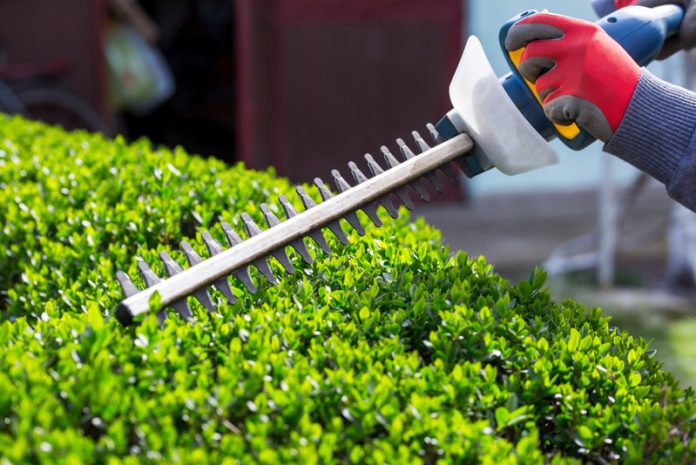Hedge Trimming, which is commonly used to delineate property boundaries or merely to fence off specific areas of the garden, takes little maintenance: at most, once or twice a year.
If you follow our instructions, you’ll have lovely hedges all year.
When Is The Best Time To Cut A Hedge?
Hedges are typically made from bushes that have two distinct vegetative periods throughout the year, one in the spring and the other at the end of the summer.
It’s best to wait for these growth periods to settle down so that the shape you give them will last for longer.
As a result, your hedge will be trimmed in April-May and September-October.
However, because hedges can be trimmed more frequently, this is not a duty that must be strictly adhered to; it only means that more work is required.
Wait until the flowers have faded before cutting flowering hedges.
Hedges Can Be Trimmed In A Variety Of Ways.
Trimming a hedge properly helps to keep it in good shape over time, guaranteeing appropriate density to keep it opaque and maximizing hedge growth.
- The tip of the base must be trimmed wider than the tip of the tip.
- This helps to provide light to all of the hedge’s bushes.
- For hedges longer than 16 feet (5 meters), use an electric or gas-powered hedge trimmer for improved precision and a less workload.
- For the larger branches, use pruners.
- Shears are more precise, which is beneficial for lower hedges.
Good-For-Hedge-Planting Shrubs
There are many different types of hedge shrubs, but some are especially well-suited to hedges due to their ability to withstand pruning.
Hedge plants including strawberry tree, wild privet, weigela, cypress, camellia, photinia, and flowering currant are ideal.
- Start an evergreen hedge and go for green all year.
- Make a flowering hedge that blooms as the seasons pass.
- Berry shrubs are great for attracting birds.
- Learn how to make mixed hedges, which act as excellent disease and parasite barriers.
Pruning And Trimming Hedges Is A Great Idea.
Obtain a long roll of burlap or a tarpaulin and place it near the hedge on the ground.
Trimmings will fall onto it, making cleanup a breeze. You’ll save a lot of time and get a wonderfully clean result!
For The First Time, You Are Cutting Hedges!
Hedge pruning should begin as soon as the hedge is planted, especially with flowering shrubs and robust non-flowering shrubs like hawthorn and privet. Reduce the plant’s height by about one-third. For new plants, this may sound severe, but if you don’t, your hedge will always be thin and weedy at the base. The next autumn, cut back new growth by half and begin cutting hedge side shoots to the desired width. After planting, evergreens and slow-growing deciduous plants (beech and hornbeam) should not be pruned. Side shoots should be trimmed by a third, while leading shoots should be allowed to flourish. The hedge will appear frail, but keep your cool.














